Australia is home to some of the world's most venomous snakes and poisonous insects.
Of the species of snakes that live in Australia, 110 are venomous and 12 of those are absolutely life threatening. Their bites can cause death to human beings. Australias deadliest snakes can be found in the bush, rural areas and some can even lurk around your backyard (especially if you back onto a golf course or a reserve).
85% of the world’s most venomous snakes live in Australia. On an average, 3000 snake bite incidents occur in Australia each year, and the casualties stand at 2 deaths each year.
Although Australia is home to almost 170 most venomous snakes, unlike countries like India, snake bites are quite rare in Australia.
What is the most venomous snake in Australia?
It’s important to remember that snakes don’t see us as food and most snakes only attack humans in scenarios when they feel under threat and need to bite as part of their escape plan. Nevertheless, snake encounters take us by surprise and when the fight or flight response is triggered, staying calm isn’t always an option.
Based on size and potential to cause death, the 10 most deadly snakes Australia has:
10 - Red-Bellied Black Snake
Scientific Name: Pseudechis porphyriacus
Habitat: East coast of Australia, Blue Mountains, Canberra, Sydney, Brisbane, Melbourne, Cairns, and the Macquarie Marshes
Size: 1.25 metres (average)
The red-bellied black snake is one of the most frequently seen Australian snakes, although this snake is not classified as “aggressive”. Red-bellied black snakes can be commonly seen in moist habitats, primarily streams, swamps and lagoons, within forests, woodlands and grasslands and even in urban areas. The red-bellied black snake is shy, and will try to flee if it encounters humans. However, in cases where the snake is threatened, it usually raises its head and forebody above the ground and mock attacks by hissing. The snake only bites when severely harassed.
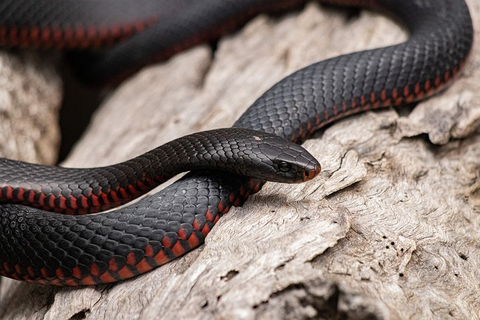
Image: A Red-Bellied Black Snake
9 - Lowlands Copperhead
Scientific Name: Austrelaps superbus
Habitat: Southeastern Australia and Tasmania
Size: 1 to 1.5 meters (average)
The snake gets the name “copperhead” due to a brown or yellowish complexion. They live in high rainfall regions of Australia, which are generally colder than other regions. As the name goes, this snake also prefers low vegetation and is found near marshes and swamplands. Similar to the red-bellied black snake, the lowlands copperhead can also lift its head off the ground when provoked. This manoeuvre is accompanied by hissing. This one of the most venomous snakes in AUS only lashes out and bites under severely threatening conditions.
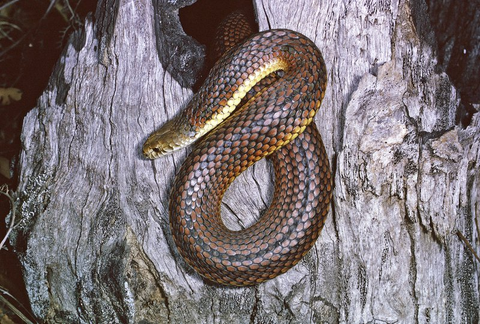
Image: A Lowlands Copperhead (Credit: The Australian Museum)
8 - King Brown Snake
Scientific Name: Pseudechis australis
Habitat: All Australian regions (except Tasmania and Victoria)
Size: 2 to 2.5 metres (average)
Also known as the “mulga snake”, the king brown snake is Australia’s longest venomous snake, stretching at approximately 2.5m when mature. This snake prefers low vegetation, but is also found in woodlands and grasslands. The king brown snake can live for up to 20-30 years. When threatened, king brown snakes will inflate their body, and will hiss by moving their head and flattened neck from side to side. They will lash out and attack if they are extremely threatened.
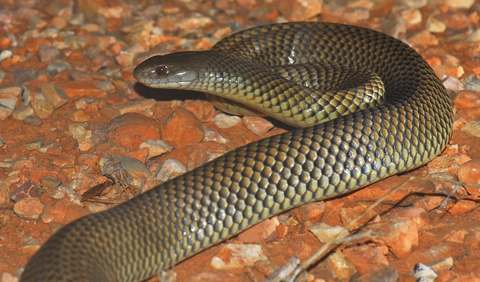
7 - Western Brown Snake
Scientific Name: Pseudonaja nuchalis
Habitat: Northern Territory, Queensland, Western Australia, and Victoria
Size: 1.8 metres (average)
The western brown snake is agile in nature, but is also considered as “nervous” snakes. These snakes, when threatened, will take cover as the first response. If pressed further, the snakes rear up in an “S” shaped form and gape at the threat. Further provocation may lead the snake to bite quickly and escape. This one of Australia's most venomous snakes is generally found in drier habitats, such as grasslands and woodlands.
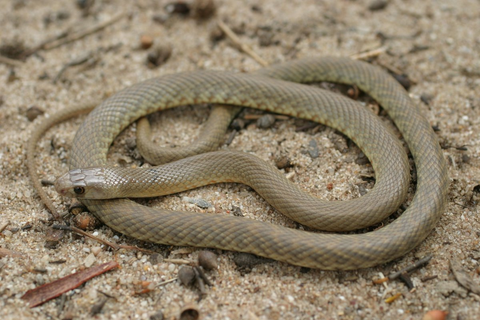
6 - Death Adder
Scientific Name: Acanthophis antarcticus
Habitat: Eastern and Southern Australia, Queensland, New South Wales, and Victoria
Size: 0.4 to 1 metre (average)
Although relatively small, the death adder or common death adder is considered one of the most venomous snakes in the world. Like the western brown snake, the death adder favours a dry habitat and can be spotted in grasslands, woodlands and forests. Death adders are patient predators and will wait for days before catching a prey. Their habitat allows plenty of camouflage which is favourable for hunting. Death adders have a slight overhang in their tails which almost has a wormlike resemblance. This overhang acts as “bait” for potential preys.
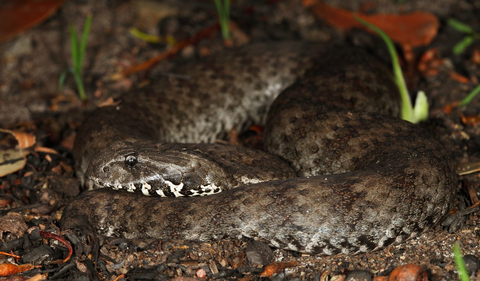
5 - Tiger Snake
Scientific Name: Notechis scutatus
Habitat: Coastal regions of western and southern Australia
Size: 1.2 metres (average)
Unlike the snake species we’ve been through so far read about, the tiger snake is rather aggressive. If you are researching what is the most venomous snake in the world, you’ll definitely find this name. It is small in size and favours wetland more than dry land. They can be spotted in areas by creeks or river systems. When threatened, tiger snakes put on a show of threatful manoeuvres. Hissing and lashing out at the threat with a forceful bite occurs when pressed too much. Tiger snake venom is extremely toxic and contains neurotoxins, hemolysins, coagulants, and myotoxins which are lethal to humans.
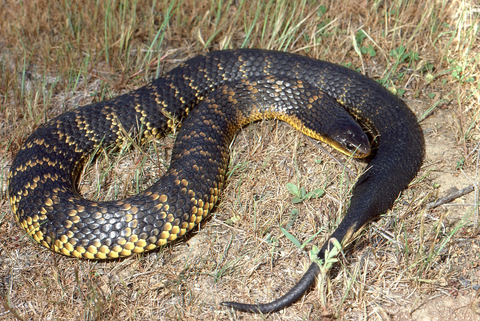
4 - Coastal Taipan
Scientific Name: Oxyuranus scutellatus
Habitat: Coastal regions of northern and eastern Australia
Size: 1.2 to 2.0 metres (average)
Coastal taipans are close cousins of the deadly inland taipans and are diurnal snakes. This species prefers warm tropical conditions for which they are mostly found in wetlands and monsoon forests. These species also prefer sugarcane fields and woodlands due to their abundance of prey. Coastal taipans like other snakes will consider flight over fight but if threatened severely, they will ferociously bite. The coastal taipans have fangs that can be as long as 12mm and their bites are formidable, accurate and multiple in number.

3 - Eastern Brown Snake
Scientific Name: Pseudonaja textilis
Habitat: Eastern and central Australia
Size: 1.5 to 2.0 metres (average)
The eastern brown snake is also a diurnal species and is considered as the second deadliest snake in the world. These snakes prefer open landscapes such as woodlands, scrublands, and savannah grasslands. They are not found in rainforest and alpine regions. Eastern brown snakes can thrive in urban and rural areas where human habitats are found.
Although apparently it may seem that human disturbance may be a threat to the snakes, the snakes themselves see these areas as opportunistic feeding grounds lurking with prey like small rats, mice and birds. Defensive attack is common and only mounted when the eastern brown snake feels severely threatened and cornered. The eastern brown snake is responsible of causing the greatest number of lethal snake bites in Australia.
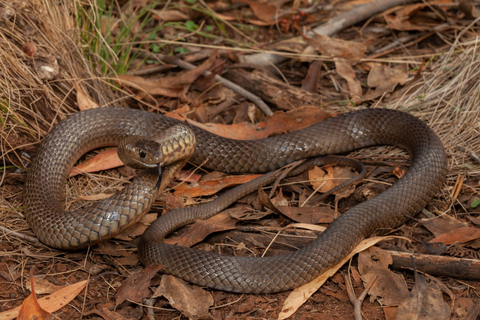
2 - Belcher’s Sea Snake
Scientific Name: Hydrophis belcheri
Habitat: Indian Ocean and northern coast of Australia
Size: 0.45 to 1 metre (average)
Small in stature with a timid and docile nature, the belcher’s sea snake is the most venomous sea snake. The snake lives mostly underwater and can hold its breath for almost 7 to 8 hours before resurfacing to grab air. This snake is abundantly found in the warm waters of the Indian Ocean around the Gulf of Thailand, the Solomon Islands, and the northwest coast of Australia (around the North Territory and Queensland). Belcher’s sea snake bites are extremely dangerous and the venom can kill a victim in under 30 minutes.
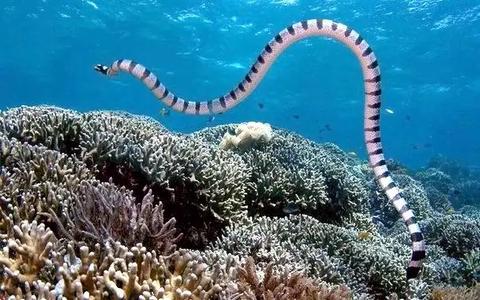
1 - Inland Taipan
Scientific Name: Oxyuranus microlepidotus
Habitat: Queensland and southern Australia
Size: 1.9 to 2.68 metres (average)
The inland taipan, due to its highly toxic venom, is the deadliest terrestrial snake in the world. This snake prefers clayish grounds and nests in deep cracking-clays and cracking-loams of the floodplains. These grounds provide the snake with camouflage and facilitate in ambushing their prey. Though the inland taipan has a reputation as a fierce snake, the snake also has a shy disposition and, like other snakes, only mounts an attack when provoked. The snake gives off some warning signs when threatened, by raising its forebody in a tight low S-shaped curve and pointing its head towards the offender. The snake lashes out to bite when the offender ignores the warning.
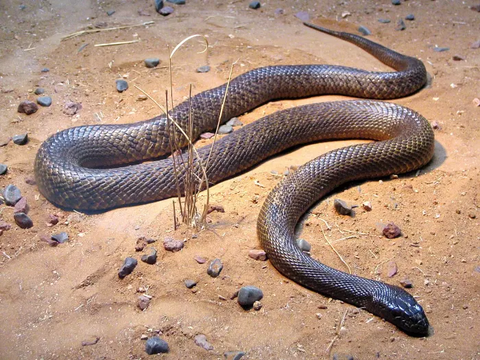
What to do if you see a snake
Human habitats are increasing in number and while we see snakes as threats to us, snakes see us as invaders too. With their habitats shrinking, snakes and humans now share habitats. In such a scenario, encountering a snake near car parks or in your backyard is not surprising. If you’re worried about your safety after seeing a snake around your home or property, please contact your nearest animal pest management service to relocate the snake in its own habitat. There are various ways to keep snakes away from your property.
Snake Season Never Ends in Warmer States – How to Protect Your Home Year-Round
If you live in Queensland, Northern NSW, Northern Territory, or Western Australia, you know that snakes aren’t just a summer concern. Unlike the cooler southern states, where snake activity drops in winter, warmer climates keep snakes on the move year-round.
Why Snakes Are a Year-Round Concern in Warmer States
In Queensland and Northern NSW, winter brings cooler nights, but daytime temperatures stay warm enough for snakes to remain active. Snakes seek warmth in and around homes, sheds, and garages, making encounters more frequent than many homeowners expect.
The Northern Territory is home to some of Australia’s most venomous snakes, including the King Brown and Western Brown, which are active even in winter. Meanwhile, WA’s varied landscapes, from coastal regions to the arid outback, create ideal conditions for snake movement all year long.
How to Keep Snakes Away from Your Property
The best way to prevent snakes from entering your home and garden is by creating an environment that discourages them. Here’s how:
✅ Eliminate hiding spots – Keep your yard free from woodpiles, thick mulch, and overgrown grass.
✅ Remove food sources – Snakes are drawn to areas with rodents, so keeping pests under control is key.
✅ Install EnviroBug Solar Snake Repellers – A safe, chemical-free solution that emits vibrations to deter snakes from settling on your property.
Why EnviroBug Snake Repellers Are Essential
Our solar-powered Snake Repellers use pulsing vibrations to mimic the movement of predators, effectively scaring off snakes without harming them. Unlike chemical deterrents, they offer a long-lasting, environmentally friendly way to keep your home safe.
💡 Did you know? Snakes can return to familiar areas year after year. Installing repellers in key locations ensures they won’t feel comfortable staying near your property.
Last Chance to Secure Snake Repellers at This Price
With increasing manufacturing costs, this will be the last production run at the current price. If you live in QLD, NT, WA, or Northern NSW, now is the time to invest in year-round protection.
Don’t wait until summer – order your Snake Repellers today!
You can protect yourselves and your loved ones with Envirobug's snake repellers and snake gaiters.













